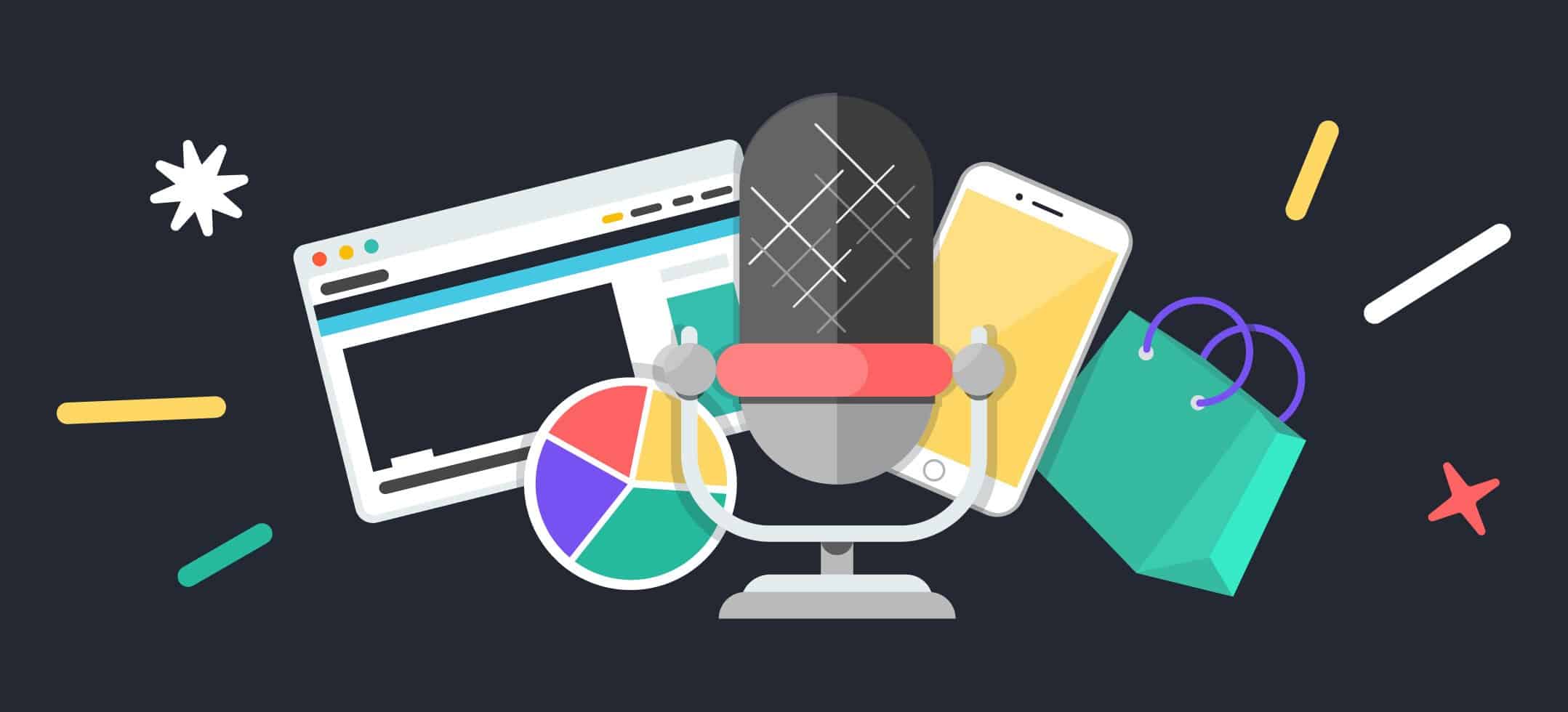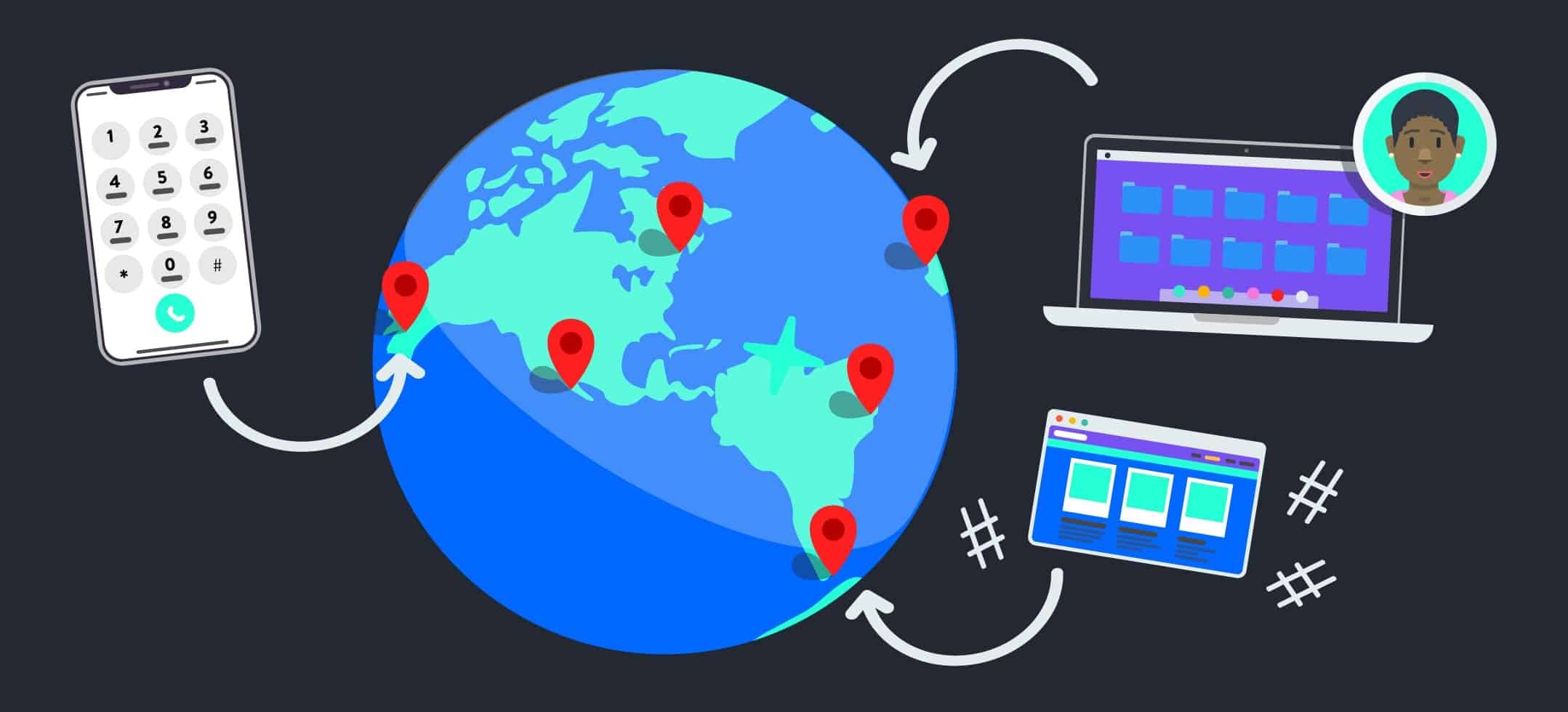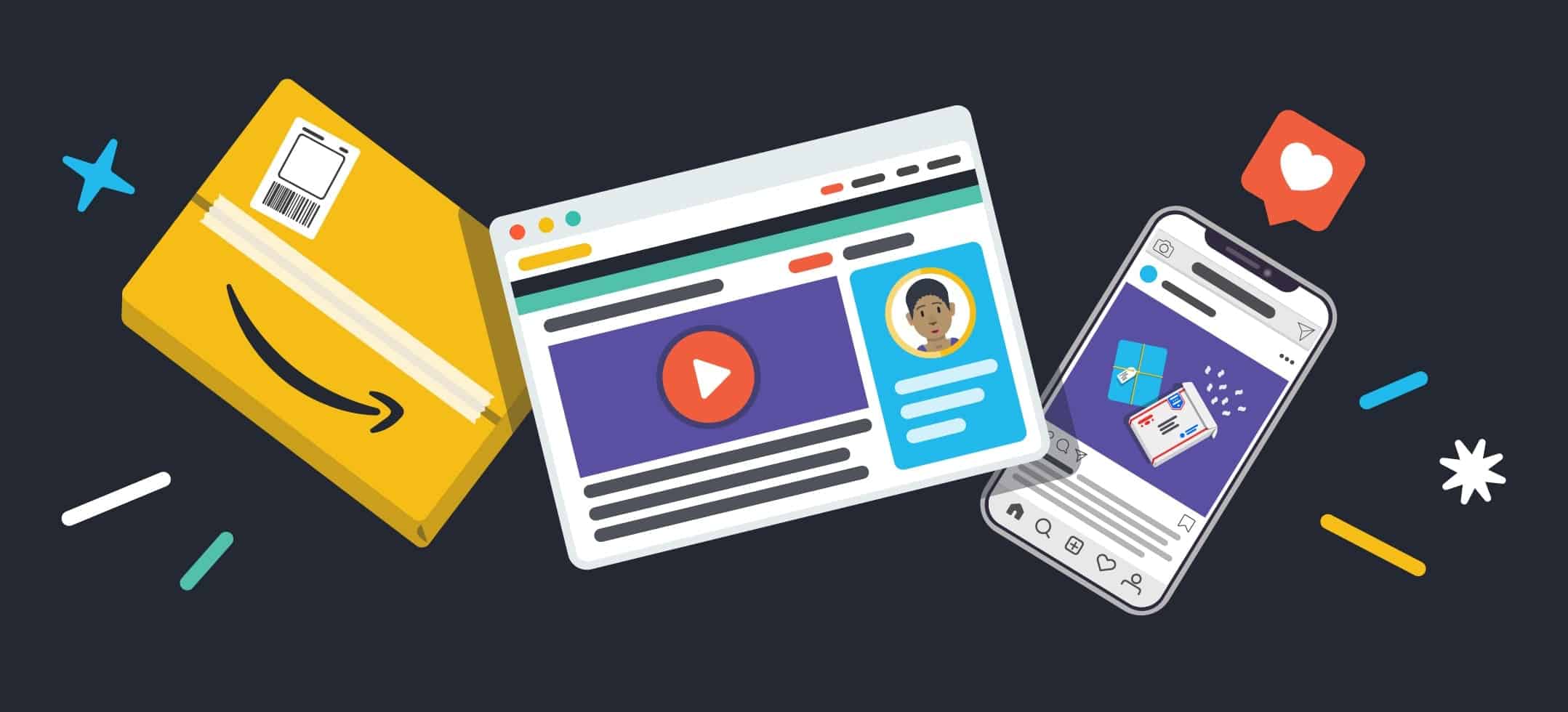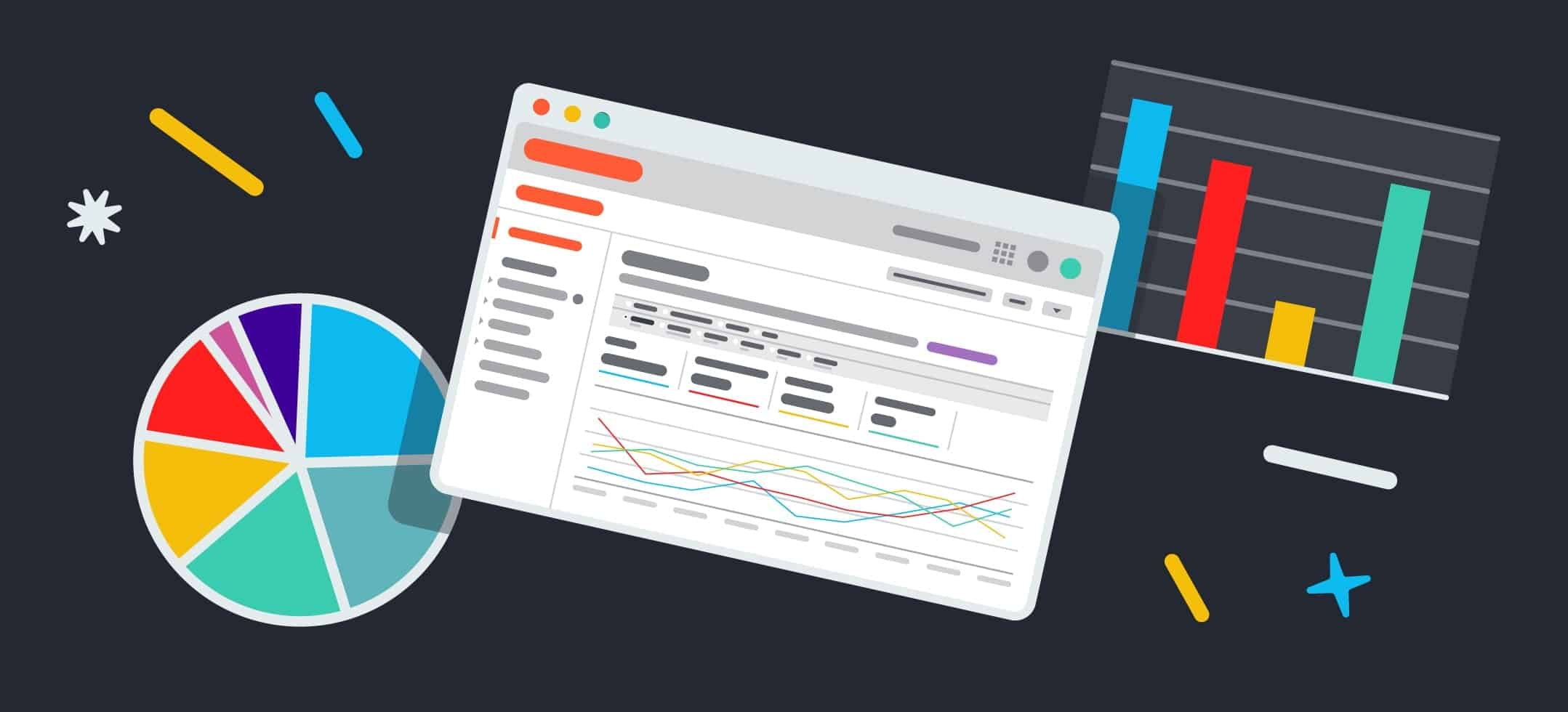
How to Sell Digital Products Online: Digital Products vs. Physical Products
When most people think of ecommerce, they think of selling physical products online. While that’s not entirely incorrect, it’s also not the complete picture. Turns out, there’s more to ecommerce than just selling physical products online — digital products can be sold online, too! In this article, we’re sharing everything we know about selling digital products online including the different types of digital products, how to create digital products, where to sell digital products, how to price digital products and more.
If you’re curious about how to sell digital products online, keep reading.
Table of Contents
What are Digital Products?

Digital products are intangible assets or content that are sold and/or distributed online. Digital products can come in a wide variety of different formats such as ebooks, images, videos, games, media, courses, templates, software, services, and more. They’re distributed digitally meaning that they don’t actually get shipped to customers which means that they can instead be downloaded, streamed or accessed immediately by the purchaser on their computer, smartphone or tablet.
Why Sell Digital Products?

Digital products have so many different advantages, many of which make them a desirable alternative to selling physical products. In general, digital products are simple to make, easy to distribute, are a sustainable business model, and have a high profit margin earning potential.
For example, ebook publishing revenue in the US is expected to grow from 5.31 billion dollars in 2018 (source), digital album sales totaled 53.4 million units in 2018 (source), and the global self-paced online learning revenue in 2018 totaled 43.84 billion dollars (source). Digital products in virtually all categories are lucrative, and since there are lower barriers-to-entry to create digital products and also simpler distribution methods compared to physical products, many ecommerce entrepreneurs are making the switch to sell digital products full-time.
Let’s look more closely at the advantages and disadvantages of selling digital products so you can decide whether selling digital products is a good fit for you.
The Pros & Cons of Selling Digital Products
Advantages:
- Passive Income: You don’t have to make a product every time a customer orders from you, you simply make one product, automate the selling process, and then earn income passively
- Personal Freedom: You can sell from anywhere, to anywhere — digital products put no limits on your lifestyle
- Lower Overhead Costs: Costs to produce digital products are generally low and there’s no need to hire a warehouse to store inventory
- Easy to Reach Target Market: You’re not bound by a brick-and-mortar location where your only potential customer base is dependant on who lives locally to you. There are few limitations to the audience you can reach online
- No Inventory Management: There’s no need to store products, manage inventory or SKUs
- Easy Manufacturing Process: There are no MOQs when ordering products from a manufacturer
- No Shipping Process: No need to pick, pack, and fulfill orders or hire a warehouse to do it for you
- Low Product Return Rate: No damaged products and a lower chance of customers receiving a faulty product
- Easy Automation: Pretty much the entire process of selling digital products can be automated
- No Shipping Limitations: Some physical products — like beauty products, food products, and machinery products — have limitations on where and how they can be shipped but digital products generally have no distribution limitations
- Lower Barrier-to-Entry: It generally costs less to create digital products and anyone can create a digital product
- Independence From Suppliers: Usually when creating a physical product you have to work with a supplier to actually manufacture the product and bring it to life but, with digital products, they don’t have to be created by anyone else unless you want them to be
- High Profit Margins: Because digital products are generally inexpensive to make and you just have to create the product once and then it can be sold an unlimited number of times — plus, there are generally low overhead costs — digital products usually have the potential for a very healthy profit margin
- They Don’t Break, Perish or Wear Out: Digital products can last a long time because they’re not subject to the same kind of wear and tear that physical products experience
- Always In-Stock: You can’t sell out of digital products so you’ll never miss out on sales and you’ll never over-sell your product
- Immediate Distribution: No need for customers to wait for their product to arrive, digital products are sent directly to the customer after the purchase goes through so customers don’t have to wait for the product to arrive
- Easy Refunds: Your customers don’t have to ship the product back to you to return it, simply refund their order if they’re dissatisfied
- Offer Free Trials: It’s much more difficult logistically to offer free trials for physical products but providing free trials is a great way to get potential customers to purchase your digital products
- Low Risk: Selling digital products is a much lower-risk option than many other types of products
Disadvantages:
- Easy to Replicate: Since digital products are sent out online, they can be easy to copy, duplicate, replicate, and share with others. There are ways to limit this, such as by using expiring links, license keys, watermarks, source code protection, PDF stamping, and digital product distribution platforms that offer product-specific security features
- Not Tangible: Digital products can’t actually be held by a customer (unless they’re able to print out the product for themselves), which may bother some customers. Some customers prefer a tangible product they can experience in real life
- Some Customers Don’t Understand Digital Products: Some customers still expect all products sold online to be physical products that they’ll receive in the mail, so it’s important to be quite clear and direct on digital product pages when an item is, in fact, only distributed digitally, just to clear up any misconceptions a customer might have
- Lower Perceived Quality: Consumers may perceive digital products to be less valuable because they exist in an intangible way
- Competing Against Free Products: It’s likely that consumers can find similar versions of digital products online, but for free, so you have to make sure your product can compete against what kind of content is already available for free
- No Repeat Buyers: Once customers buy a digital product there’s no need to re-buy it (unless it’s a digital membership/subscription service)
- Competitive Market: Because creating some digital products has such a low barrier-to-entry, it can be a very competitive landscape to exist in as an ecommerce merchant
- Some Restrictions Apply: While digital products may not face the same shipping restrictions that physical products can face, digital products face some sales channels restrictions like not being permitted to sell through Facebook or Instagram. Right now, Facebook and Instagram list “primarily selling physical goods” as a criterion for their business approval requirements, which means that business Instagram accounts must be for companies that primarily sell physical goods only
Digital Products vs. Physical Products

If you’re just starting your first ecommerce business and you’re wondering whether to sell physical products or digital products, you might be quite conflicted between the two. While digital products have many appealing advantages like their high profit margin earning potential and their easy distribution methods, they do have several disadvantages as well which we listed above.
Physical products, on the other hand, also have many advantages such as it being easier to demonstrate the value of a tangible product so their perceived quality may be thought to be higher than digital products, but physical products are time-consuming to manage, not to mention expensive to source and ship.
What it comes down to, ultimately, will be your own product ideas, the niche market you’re serving, your risk tolerance, and how much of your business you want to be automated. Let’s discuss this in more detail:
- If You Have Product Ideas: If you already have an idea of what kind of product, or products, you want to sell online then you’ll probably already know whether it’s a digital product or a physical one. Depending on your product idea it’ll likely fit better into one category rather than the other, so that will help you decide.
- Think About Your Niche Market: Some niche markets are more likely to be open to purchasing one product type rather than the other. Think about your niche market’s age demographic, for example: Are they primarily people who have access to computers, smartphones, and tablets where they could download and stream digital products? Or is your niche market made up of people who don’t prefer to use smart devices to access content or products and they’d rather have a physical copy to hold in their own hands? Taking your niche markets’ preferences into consideration can help you decide between physical and digital products.
- What’s Your Risk Tolerance? If you’re a low-risk, slow-and-steady kind of business builder then digital products might be a great choice because they’re generally less expensive to create, and you don’t have to purchase inventory upfront which means you have less to lose if sales don’t go well.
- Do You Want Your Business Automated? Ecommerce stores that sell digital products and physical products can both be completely automated, however, it will depend on the types of products you sell, the ecommerce platforms you sell through and the level of support you’ll have to perform to keep your customers happy. Generally speaking, stores that sell physical products usually have some aspect to them that requires more hands-on work because there are more moving parts in the process — like picking and packing the orders, shipping the items, warehousing the products, managing returns, etc. — while stores that sell digital products don’t have to manage quite as many of those steps and for the steps they do still have to manage, usually they’re simpler.
If you’re really having a hard time choosing, however, choose both! You’re the boss of your own ecommerce store, so if you want to sell physical products and digital products then go for it. In fact, bundling digital products together with physical products can help increase your sales, so consider whether that’s something you’d like to apply to your online store.
Types of Digital Products: Digital Product Ideas

There are so many different kinds of digital products that can be sold online — really, the only limit is your imagination. Take this quote from SendOwl, a digital product distribution platform, for example:
We have customers that sell tiny house plans, doll clothing patterns, a Jamaican Patois language audio course and dictionary and best-selling indie video games. We also have customers who sell a combination of physical and digital products. (Source)
Selling digital products isn’t just about ebooks anymore — not that there’s anything wrong with ebooks it’s just usually the first example someone thinks of when they imagine a digital product but it’s certainly not the only type of digital product that can be sold online — so here’s a list of what kind of digital products can be sold online.
- Ebooks
- PDF Guides
- Tools
- Resources
- Documents
- Workbooks
- Fiction/Non-fiction books
- Manuals
- Poetry
- Stationery
- Essays
- Scripts
- Journalism
- Cookbooks
- Sheet music
- Textbooks
- Travel guides
- Blueprints
- Activities
- Budgets
- Contracts & policies
- Lead magnets
- Case studies
- Printables
- Courses
- Educational resources
- Video courses
- Email courses
- Ebook courses
- Bootcamps
- Test preparation courses
- Social media courses
- Photography
- Art
- Stock Photos
- Image presets/filters
- Drone photos
- Travel photos
- Event photos
- Video Content
- Self-created video content
- Video footage
- Stock videos
- Webinars
- Video training courses
- Animations
- Drone footage
- Video journalism
- Interviews
- Product reviews
- Tutorials
- Video logos
- Live streams
- Advertisements
- Trailers
- Audio Content
- Podcasts
- Audiobooks
- Music
- Sounds effects
- Stock audio
- Audio logos
- Recordings
- Royalty-free music
- Text-to-audio conversion
- Mixing and mastering
- Voiceovers
- Digital Assets
- Licenses for digital assets
- Social media graphics
- Icons
- Infographics
- Fonts
- Templates
- Email templates
- Website templates
- PowerPoint Templates
- Product mockup templates
- Resume templates
- Presets
- Photoshop actions
- Website graphics and vectors
- Posters & signs
- Patterns
- Business cards
- Software
- Software as a Service (SaaS)
- Apps
- Website themes
- Plugins/extensions
- Video games
- Code
- Art
- Photography
- Videography
- Choreography
- Literature
- Visual Arts
- Prints
- Phone & computer wallpapers
- Digital art
- Illustrations
- Book covers
- Music album covers
- Graphic design
- Services
- Consulting
- Graphic design
- Logo design
- Branding
- Workout/nutrition plans
- Translation services
- Web services
- Video editing
- Digital marketing/ad creation
- Data entry
- Research
- Social media services
- Music lessons
- Programming
- Product package design
- Brand audits
- Editing
- Transcription
How to Create Digital Products

How you create your digital products will obviously depend on the type of digital products that you want to create. The creation process will differ vastly from ebooks to courses to templates to software, etc. but ultimately you’ll have two options: You can create your digital products yourself, or you can get someone else to create your digital products for you.
- Creating Digital Products Yourself: If you’re just starting out and don’t have the means to hire outside help, or if you have the knowledge and experience to create your own digital products then go ahead and create them yourself! One of the main advantages of digital products is that you don’t have to work with a manufacturer or supplier to create your product for you if you don’t want to, which is one of the major barriers-to-entry that merchants sourcing physical products encounter.
- Getting Someone to Create Your Digital Products For You: You also have the option to hire help to create your digital products, whether you need help actually creating the content of the product or if you need help assembling the product into a digital format. You can hire freelancers, experts, agencies or other companies to create your products, depending on what kind of budget you have and what your desired outcome is.
These services can help you create your digital products:
- Blurb: Create ebooks to sell online
- Aerio: Create ebooks to sell online
- Creative Market: Search for ebook templates and other digital asset templates
- Teachable: Create online courses
- Kajabi: Create online courses
Use these services to hire freelancers to help you create digital products:
- FreeeUp: Hire the top 1% of freelancers in their respective industries
- Upwork: Hire all kinds of freelancers from around the world
- Fiverr: Hire all kinds of freelancers from around the world
- iWriter: Hire high-quality freelance writers
Where to Sell Digital Products

There are so many different ways to sell digital products online; you can sell them through your own store, on your blog, on marketplaces, on social media, on Amazon, and on Etsy. Before we jump into all the options, we’re going to run through the main ways to sell digital products on your own store or website and the difficulty level of each option.
If you’re selling your digital products on your own store you’re going to need a way to actually distribute your digital products to the customers who buy them. The three top-recommended digital product distribution platforms are Easy Digital Downloads, SendOwl and Gumroad. Let’s dive into the reasons why, so you can choose the option that’s the best fit for you:
- Starter Option: If you’re looking for an easy way to get your digital products ready to sell, Gumroad is a simple digital products distributor that’s tailored to helping artists and musicians sell their work, however, they do have features to help all kinds of digital good sellers. Some of these features include pay-what-you-want pricing, rentals (like movie rentals, for example), selling multiple versions of your product, pre-sales, and more. They’re not the most sophisticated or feature-rich digital product distribution channel out there, that’s why they’re not always the most top-recommended option, however, they’re known to get the job done and get bootstrappers up and running. As far as pricing is concerned, they have a free pricing plan option but to get all features there’s a monthly fee plus a percentage taken from every sale.
- Standard Option: If you’re looking for a digital product distribution channel, SendOwl comes as a highly-recommended option. They’re well known for their sophisticated and feature-rich software, but in order to use them you’ll have to have a blog, website, store or social media account to sell from — they don’t support the actual digital product store, they just help connect digital product sellers to their customers so they can sell their products. They also offer reasonable pricing plans and only charge a monthly fee for using their service, they don’t take a percentage of each sale.
- Premium Option: If you’re looking for a digital product distribution method that gives you the most control over your branding and the most premium experience for your customers, then your best option is to go with WordPress and Easy Digital Downloads. Using WordPress as your ecommerce platform gives you full control over how your website looks and functions, but it can also be time-consuming to manage and expensive to upkeep. Easy Digital Downloads offers the most sophisticated digital product distribution channel which integrates with many other services you’ll likely be using like Dropbox, MailChimp, and PayPal, however, it only works with WordPress so you can’t use it if you’re not using WordPress to host your website. It’s also a fairly pricey option, compared to the two other options we mentioned previously.
How to Sell Digital Products on Shopify
If WordPress isn’t an option for you whether you’re not interested in the upkeep or just want to use an ecommerce platform that handles the backend aspect of your ecommerce store so you don’t have to, then Shopify is likely going to be your top pick. They come as one of the top-rated ecommerce platforms in the ecommerce industry, just check out our Shopify Review to learn why, but they’re usually only recommended when it comes to selling physical products online because selling digital products online through Shopify isn’t quite as smooth and seamless.
What it comes down to is that Shopify as an ecommerce platform was made to help merchants sell physical products, not digital products. Because of that, they don’t innately offer the same kind of robust features as the three services we discussed above, so to sell digital products on Shopify you’ll have to use an additional app. Out of the digital product app options on the Shopify App Store, the Digital Downloads app and the SendOwl app are the two that come the most highly recommended.
Shopify’s own Digital Downloads app was their response to merchants who were looking for a way to sell digital products on their stores, and it offers fairly simple functionalities. This is a good option if you’re selling ebooks or other similar downloadable products but it certainly won’t be a good fit to distribute all types of digital products.
If you’re looking for a more sophistication option that offers additional features like security protection in the form of expiring links or PDF stamps, or even if you’re looking for more extensive functionalities like video streaming, product “drip” release (releasing content over a predetermined period of time), and integration with Shopify POS so you can sell digital products in-person, then the SendOwl app is a great option.
It’s worth noting, however, that while these two apps, in particular, and the other app options available on the Shopify App Store, enable you to sell and distribute digital products to your customers, there will always be some limitations because Shopify is currently just not innately designed to sell digital products. Depending on the digital products you sell, one of these apps might be the right solution for what you need, but if you’re looking to sell online courses, for example, you likely won’t be able to do that on Shopify without using a bunch of other workarounds.
How to Sell Digital Products on Amazon

Yes, you can sell digital products on Amazon but only certain types of digital products and only through Amazon’s designated distributions channels. You can self-publish ebooks through Amazon Kindle Direct Publishing, audiobooks through ACX, music and film through Amazon Media on Demand, apps, games, and software through Amazon’s App and Game Submission form, and videos through Prime Video Direct.
Not all types of digital products are able to be sold on Amazon, so if it’s not listed above then it’s likely that right now, it can’t be sold on Amazon.
Selling your digital products on Amazon can be hugely advantageous because you’ll be able to tap into their massive audience and target your customer-base more efficiently. You can also sell your products on your own store as well as on Amazon, so you get the best of both worlds.
How to Sell Digital Products on WordPress
We recommend selling digital products on WordPress through Easy Digital Downloads. It’s how we sell our digital products and, as we mentioned above, it’s one of the top-recommended ways to sell digital products through WordPress.
Easy Digital Downloads operates exclusively with WordPress so all of its features and functionalities are optimized for WordPress users. It also means that it offers flexible options like WordPress does so you can really make it your own and incorporate it seamlessly into your own website. The only downside is that it’s a premium-priced product which may not make it a favorable option for bootstrapped digital product sellers, however, we believe that, in this case, you get what you pay for and the price Easy Digital Downloads charges is worthwhile.
How to Sell Digital Products on Etsy
Yes, you can sell digital products on Etsy and it’s fairly straightforward. Check out this excerpt about selling digital products from the Etsy Seller Handbook:
Listing a digital download on Etsy is just like creating a listing for a physical product, except you’ll upload the file your customers will receive when they make a purchase. After buyers purchase a digital file on Etsy, it’s immediately available on their downloads page. You can upload audio, image or text files to your listing.
Check out Etsy’s full help guide here to learn step-by-step how to list a digital product on Etsy.
How to Sell Digital Products on Marketplaces
When selling digital products, you also have the option to sell through online marketplaces as well. We’ve discussed online marketplaces in detail in our How to Start an Online Marketplace article but if you’re not sure what a marketplace is, just think of Amazon. Amazon is a marketplace where many different sellers can sell many different types of products (including both physical and digital products) and many different consumers shop from the Amazon marketplace. Other marketplaces exist online, and some marketplaces specifically focus on selling digital products.
One of the advantages of selling your digital products on online marketplaces is that you don’t have to work so hard to bring customers into your website to see your products. The marketplace does all the hard work for you to bring traffic in, you just have to have a great product and a compelling product listing that makes customers want to purchase.
Examples of online marketplaces where you can sell your digital products include:
- Creative Market: Sell all types of digital products ranging from photos, fonts, icons, templates, and more
- Steam: Sell video games online
- Skillshare: Deliver video courses as a Skillshare instructor
As an example of a digital products marketplace, check out FilterGrade which is a marketplace where photographers can sell their Photoshop actions and Lightroom presets. We’ve connected with the founder of FilterGrade to learn more about why and how he started this online marketplace so if you’re interested in learning more, check out the FilterGrade Case Study.
How to Price Digital Products

When you’re just starting your first digital products store, it can be hard to know how to price your products. The difference between pricing physical products and digital products is that usually digital products don’t have the same kind of overhead that goes into them like physical products often have.
When determining the prices for your digital products, take these factors into account:
- Overhead: Any overhead that went into creating the digital product, whether you hired someone to create the content, someone to format the digital file, or even the monthly fees you pay to keep your store up and running. You want to recover all the costs you incurred to make the product and all the costs you’ll incur to sell the product.
- Value: How valuable is your digital product? Consider how much value your customers will gain from what your digital product provides them and how it will enhance their lives. More valuable products should have that reflected in the price.
- The Competition: How do your competitors price their products? Check out your competitors’ sites and see what they’re charging and decide whether you’d be charging too much or not enough if you charged the same prices for your products.
- Your Niche: How much do you think your customers will be willing to pay? Think about your target market — do they have a lot of disposable income to spend on your product or are they more likely to be reserved and frugal with their cash?
- Who You’re Selling To: If you’re selling your products to other businesses or business owners rather than directly to consumers, you should put a higher price tag on your product. Other businesses will be re-selling your product or making a cut of the revenue in some way, so take that into account.
- Offer Discounts: If you plan on offering discounts on your digital products whether for special occasions or as an ongoing thing, think about how that will impact your revenues and profit margins.
Conclusion
You should now have all the information you need to decide whether selling digital products online is the right choice for you. Take into consideration all of the advantages and disadvantages of selling digital products and how they compare to physical products. The sky really is the limit to the types of digital products that can be sold online so get creative!



